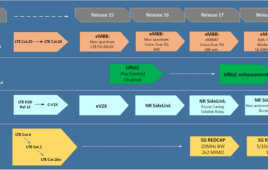It’s not the traditional way of verifying your age by producing a driver’s license,
but wireless marketers and engineers are finding ways to do so,
whether end-users – both young and old – like it or not.
Mobile industry professionals widely agree they want to avoid the pitfalls of the wired Internet industry.
That can be easier said than done. When it comes to age verification – something the wired Internet is not well-known for – the PC has the advantage of a full keyboard. On the mobile phone, the keypad usually isn’t conducive to entering a lot of data.
Still, mobile marketing companies want to reach as many consumers as legally possible with age-appropriate content. Marketing to consumers 13 and under is illegal, so you can rule them out. Marketing to those 18 and over is somewhat easier, as more public records are available on them. The 14- to 18-year-old age range is a little more difficult, as their public records are more sparse, but age-verification solution vendors say they have their ways.
PUTTING IT TO THE TEST
During a demonstration of its service at a Mobile Marketing Association (MMA) event in November, NeuStar used SMS and a short code to show how its system works. The age of participants had to be verified before they could get tickets to a martini-themed evening event. Participants were asked to provide four things: first name, last name, last four digits of their Social Security number and a ZIP code. About 75% of the participants completed the process. Those who were deemed 21 and older received a 3D bar code on their phones.
 |
|
Ticer: SMS is a successful approach for verification
|
NeuStar doesn’t know why the other 25% failed to complete the process – they might have been interrupted or got jittery about giving up the last four of their social security numbers. But NeuStar executives were pleased with the participation rate, according to John Ticer, vice president of product marketing at NeuStar. Just as they had suspected, using an SMS session to gather data points typically is easy for end-users, whether they happen to be in the wireless industry or not. That’s important for brands because they can reach a majority of the U.S. handsets that way. But if SMS isn’t the chosen method, NeuStar can offer an interactive voice response service or a mobile-Web optimized method.
What NeuStar is doing to verify age is something carriers, content providers or aggregators could do on their own; NeuStar is partnering with a U.S. data provider that can supply a similar service to others in the value chain. But NeuStar, which is the administrator of the U.S. common short code program, says its long-standing role in the industry, providing carrier-class services to all North American carriers, puts it in a unique spot to administer age verification. “We are very familiar with the food chain in mobile marketing, so we have a lot of data on what’s a good consumer experience and what’s bad,” Ticer says. Plus, NeuStar can take on the added challenge of maintaining security and privacy throughout the process.
Most of the content that goes through the mobile ecosystem is universal and doesn’t require age verification, says Anil Malhotra, co-founder of Bango, which facilitates the delivery of content for thousands of providers. Yet it’s important for the industry to establish age verification practices for mobile devices; after all, they are less visible to parents than PCs.
 |
|
Malhotra: A lot of content has age restriction requirements.
|
In the United States, an agreed-upon standard doesn’t really exist for the mobile world, although it’s a conversation the industry needs to have, Malhotra says. Bango requires certain information about the content it handles, such as whether any audience-restricted information is involved. Even certain types of music may require age verification, he notes.
Age verification is likely a topic that will come up at the MMA’s Consumer Best Practices Forum on Jan. 16, as it has been identified as an agenda priority for 2008, according to MMA President Laura Marriott.
ID VALIDATION
Age verification solution vendors check data against public databases such as motor vehicle registration, voter’s registration, property ownership and others. They also tend to use some proprietary solutions but don’t reveal the sources involved.
Veratad Technologies can verify the 18 and older crowd, but it also has data that increases its match rate in the 18- to 24-year-old range, a historically difficult group to gather information on for verification purposes. It also has data that helps identify 14-year-olds and older. “That’s definitely a differentiation in the market for us,” says Veratad President Pattie Dillon, who won’t reveal the source other than to say it does not include Social Security numbers.
Like other vendors in the space, Veratad tries to be conscientious about the type of information people are asked to give, and it can gather information on somebody with as little as a first and last name, street number and ZIP code. Because people are sensitive about giving out Social Security digits, the company has a patent-pending solution that allows someone to enter some calculation of their Social Security number, such as the sum of the first and last digits, allowing it to verify a Social Security number without asking for the full number or the last four digits.
Along a similar vein, data provider Choice Point can determine a person is who they say they are and if they are eligible to access something. The company does not provide wireless phone numbers and is not directly involved in helping companies do targeted marketing. “When we execute age verification, we don’t send data back,” says Dennis Becker, vice president and general manager at Choice Point. “We send an answer back.”
The company’s clients can fine-tune the solution based on the type of content they’re sending out the door – they can use stringent or less stringent methods to determine age, depending on the situation.
Naturally, it’s in the best interest of the mobile phone industry to avoid the pitfalls of the wired Internet, like those that are so widely documented in programs like Dateline NBC’s To Catch A Predator. “If the mobile phone world gets as bad as the Internet, it’s going to be very devalued in terms of … ‘Do I believe I’m interacting with that commerce service’” and not somebody in another country who’s trying to steal credit card numbers, Ticer says. In sum: “There’s a lot at stake.”




